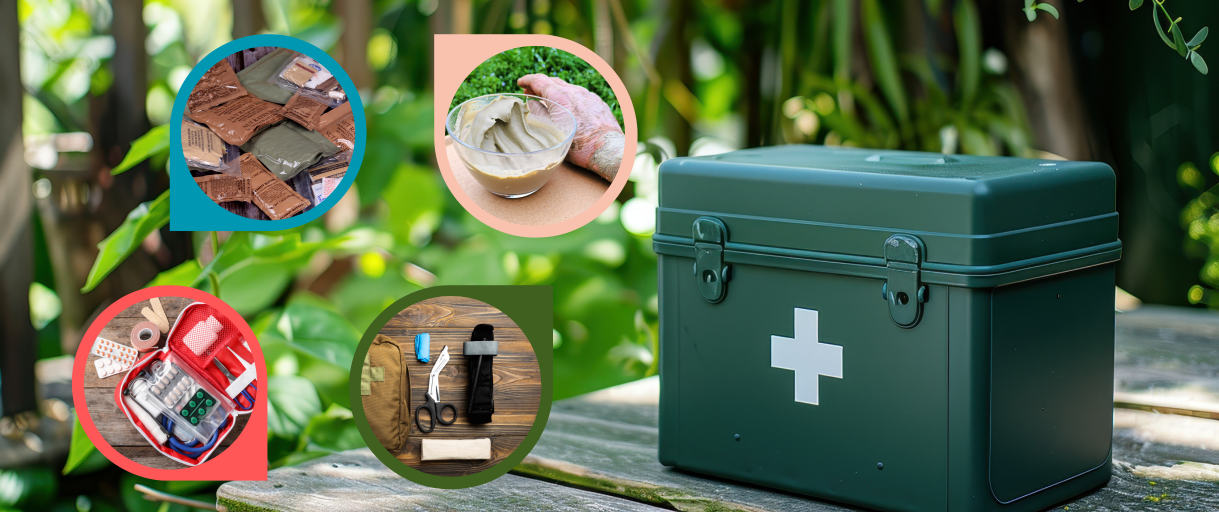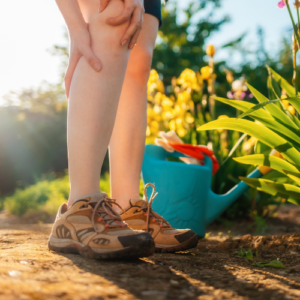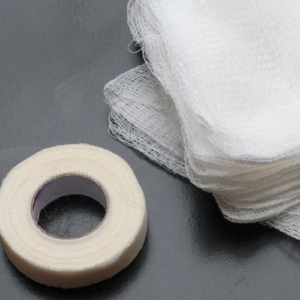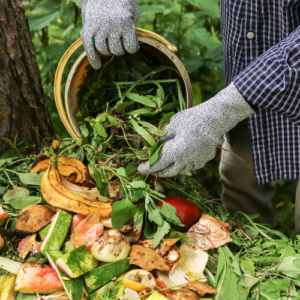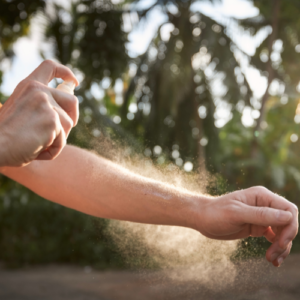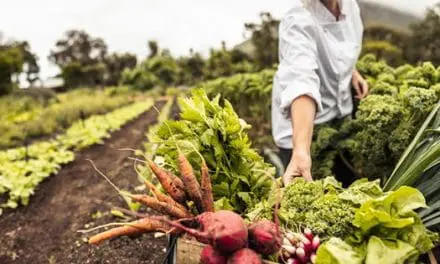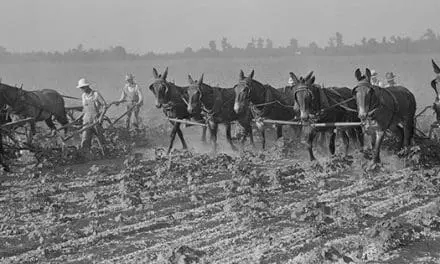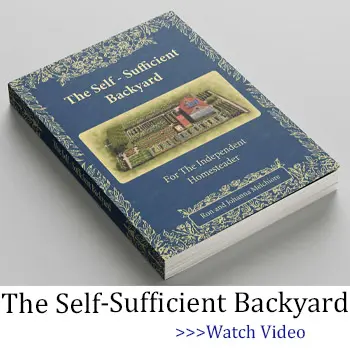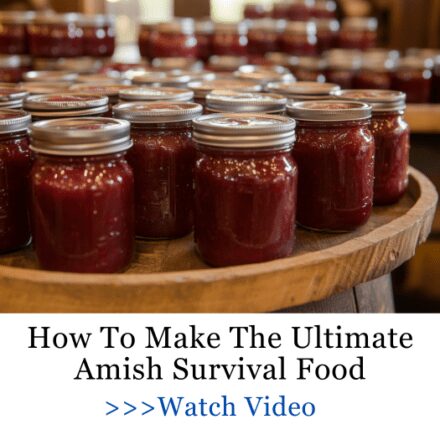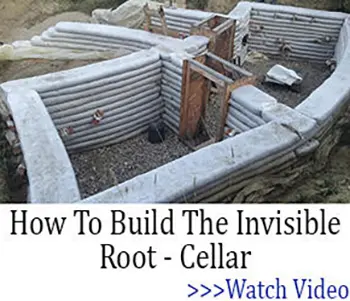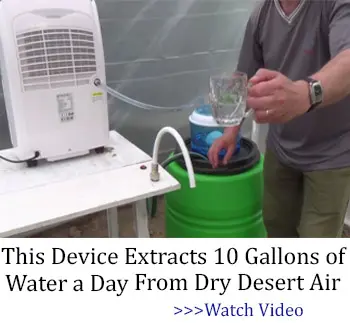Gardens are gentle, quiet places that often offer us peace and relaxing moments. Until the thorns of a blackberry vine cut our arms like a razor. The simple fact of the matter is that even the gentlest places can cause some injuries or worse. That goes from the amount of bacteria in manure and compost to the sprains of constant digging or cuts from the smallest garden tools.
Working outdoors always has its share of possible injuries and gardening is no different. The simple solution is to be prepared with a gardener’s first aid kit that can allow for an easy and effective treatment for any garden injury. And it doesn’t stop there.
Gardens Sometimes Need Help
Garden first aid applies to what you grow as well. From treating plant diseases to repelling pests and simple pruning and support for what you grow. We’re going to cover both, starting with a first kit for the gardener and then moving onto a first aid kit for the garden itself.
A Homesteader’s, Gardener’s or Arborist’s First Aid Kit
This kit is designed to treat the most common injuries any gardener, logger or arborist can be subject to. Most treatments are basic with infection as the most serious.
Common Garden Injuries
- Cuts
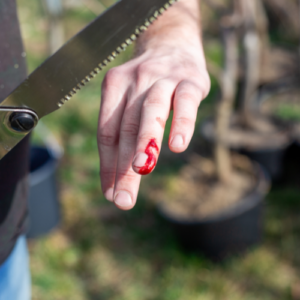 Cuts are common in the garden and could pose a serious threat if infected from manure or bacteria residing in compost. The cuts often happen around thorn bushes like roses, raspberries and especially blackberries. Garden gloves are a solution we’ll cover later, but exposed arms that glance against a thorn will often leave a bleeding scratch.
Cuts are common in the garden and could pose a serious threat if infected from manure or bacteria residing in compost. The cuts often happen around thorn bushes like roses, raspberries and especially blackberries. Garden gloves are a solution we’ll cover later, but exposed arms that glance against a thorn will often leave a bleeding scratch.
Garden tools can also be a hazard in addition to unexpected cuts from garden stakes, nails or staples in trellises and other lurking sharp edges.
- Splinters
Most plant supports from stakes to trellises to branches can embed a splinter. Here again, gloves are a good idea, but those bare arms are always ready to receive a random, glancing splinter. Splinters are also common when working around the wooden supports around a raised bed or wooden planter.
- Skin irritations
Most garden plants are non-toxic to skin, but many weeds aren’t so benign. Skin irritations are common at times. Complicating everything is the sun. Gardens tend to be planted in direct sunlight and sunburn is inevitable without sunscreen and may require a topical treatment if you miss a spot with suntan lotion or sunblock.
- Stings
The blooms on flowers and vegetables attract pollinators and that’s a good thing. Unfortunately, most pollinators from bees to wasps have stingers and stings are common.
- Blisters

Whether it’s sunburn or the repeated use of garden tools, blisters are no stranger to a gardener, even when wearing gloves.
- Infections
From cuts to scrapes to broken blisters, exposure to dirt, compost and even the leaves of plants can carry microbes that cause infection. It may be the most serious garden injury, especially if not properly treated over time.
- Sprains
Step in a hole in the garden or trip over a brick or a rock and it’s easy to sprain an ankle, twist a knee or worse – fall or trip. Sprains are no stranger to gardeners.
- Eye injuries and irritation
Spraying anything in a garden, even if it’s an organic treatment, can lead to eye injuries. Even a brush against the eye from a vine or plant can leave you in tears.
Treatments for Garden Injuries
A gardener’s first aid kit should be contained in compartments in a transparent plastic box. Each item should treat any of these potential injuries and include:
- Band-Aids

Try to assemble an assortment of sizes and don’t forget bandages for fingers and even larger bandages for abrasions or scrapes. A bandage protects any wounds from potential infection and seals in antiseptics.
- Gauze pads
Gauze pads are inexpensive, and a small variety of sizes make sense for larger cuts, scrapes and blistered areas. They’re perfect for providing cushioning and absorbing any excess fluid from the wound. But when you’re dealing with a more serious injury, something like a silver blood clotting gauze can be a real game-changer. This gauze helps stop bleeding faster while also preventing infection, especially important when you’re dealing with deeper cuts or nicks.
➡️ This Should NEVER Be Missing from Your First Aid Kit ⬅️
- First aid tape
First aid tape holds the gauze pads in place and can also seal off any exposed cut, scrape or blisters from exposure to germs.
- Alcohol wipes antiseptic wipes
This is a pretreatment before applying an antiseptic cream or a bandage.
- First Aid Cream
If any bacteria have entered a wound or is in the area, a dab of antiseptic cream like Neosporin or other triple-antiseptics can help prevent infection.
- Hand sanitizer
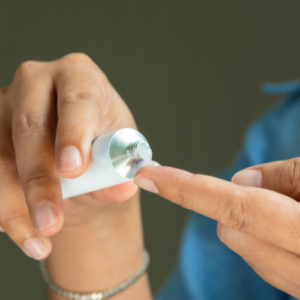 A familiar treatment from our recent past that may be wise to use after any time spent in the garden.
A familiar treatment from our recent past that may be wise to use after any time spent in the garden.
- Anti-Itch Cream
An anti-itch cream can make short work of skin irritations whether it’s from a plant, the sun or an insect.
- Burn Cream
The best and fastest treatment for sunburn.
- Muscle Pain Relief Cream
An old standby treatment for muscle soreness, sprains and other injuries to muscles.
- Eye drops
Whether it’s dust in the wind, an allergic reaction or spray from chemicals eye drops can offer quick relief to any eye irritations.
- Tweezers
The best tool for removing splinters.
- Pain Relievers like Aspirin and Ibuprofen
If it hurts, take some aspirin. Ibuprofen also treats pain and also has the added benefit of reducing inflammation.
When you use it

The obvious use occasion is as needed but immediate treatment is wise to prevent infection or to at least continue your work in the garden. It’s also possible that things like sunburn or muscle soreness don’t show up until later in the day.
I’ll never forget the day I was out in the garden, just pruning a few branches, when my hand slipped and the blade caught me right across my palm. Blood was streaming down, and I was miles away from the nearest pharmacy. My first instinct? Reach for the nearest thing I had, my makeshift first aid kit. But as I stood there, trying to patch myself up, I realized I didn’t have nearly enough to deal with a serious injury like that one.
This book changed everything for me. It covers the four antibiotics you should stockpile so you’re always prepared. It teaches you how to make your own natural painkiller from plants that grow right in your backyard. I even learned how to clean, stitch and treat open wounds like that one right at home, all with simple steps and common ingredients I already had on hand.
And that’s not all. The guide also includes a DIY recipe for an antibiotic salve, something I now keep in my kit at all times. No more relying on store-bought remedies that I can’t always get when I need them. Instead, I’m armed with the knowledge and tools to take care of myself, no matter where I am.
Now, when I’m out in the garden, or anywhere else, I don’t panic. I feel prepared.
Preventative Measures
Various tools and equipment can help you avoid the injuries that are common in gardens. Here are some of the preventative measures that can prevent any injury in the first place.
- Gloves

Gloves are the big ones when working in any garden. Nitrile gloves with an elastic fabric for the back of your hands can protect you from most common injuries and are nimble enough to let you grab, grip and hold tools and pull weeds.
- Sunscreen
Sunscreen or even sunblock is the best way to avoid sunburn, especially early in the season when many of us are coming out of winter with very fair complexions. Don’t forget the back of your neck and the tops of your ears.
- Long sleeve shirt
It seems simplistic but something as basic as a long sleeve shirt can protect our arms from sunburn and cuts, scrapes and other skin irritations. This is especially important if you’re working around thorns.
- Protective eyewear
You don’t have to go as far as goggles or safety glasses, but even a basic pair of sunglasses can protect your eyes from injury.
- Knee pads
Gardeners spend a lot of time on their knees and rocks, sticks and bricks do us no favors. Even a padded knee mat can make kneeling in a garden easier.
- Mosquito repellent

Harvest season is when the mosquitoes come out and a simple mosquito repellent can keep the bugs away. You could even plant citronella or basil in your garden which naturally repels mosquitoes.
- Salves and Sprays
While it’s always better to prevent injuries, sometimes a little extra protection goes a long way. Natural salves and sprays can help protect your skin from irritations, like those caused by poison ivy or nettles, and provide a soothing layer against cuts or scrapes. A good herbal salve made with ingredients like calendula, lavender or chamomile can help calm your skin after a long day of working in the garden. For more severe irritations, there are also sprays you can use to keep bugs at bay or calm any redness or itching from exposure.
It’s all about taking the extra steps to make sure you’re prepared, so that when you’re out there getting your hands dirty, the only thing you’re worried about is how much your plants have grown.
One of the best discoveries I made was learning how to create my own anti-mosquito salve and bug-off spray. I picked up a trick for making a first aid spray that can clean wounds quickly, and even a stop-bleeding powder that’s come in handy more than once. I found out how to make a natural version of Betadine, perfect for disinfecting cuts without worrying about chemicals. And you can also learn all of this knowledge, along 200+ others, from right here.
First Aid for the Garden
Flowers and vegetables need first aid too. Insects are always a potential threat as well as fungus and other plant diseases. Additionally, basic garden practices like pruning, weeding, and soil care can help make any garden healthier both in the short-term and through the growing season. Here are the common practices and treatments for any garden.
- Weeding

Weeds compete for water and nutrients in the garden. A handheld claw cultivator can make short work of weeds, or you can just pull them and compost them.
- Composting
Regular composting as a top dressing keeps plants healthy and well fed. Be sure to use a small garden shovel or gloves on your hands whenever handling compost as a top dressing around your plants.
- Chemical or organic insect sprays
Bugs can devastate a plant, and you can either spray your garden with a chemical insect spray, mix up an organic repellent or pick insect pests off by hand. That’s a common practice for tomato hornworms and Chinese beetles. Diatomaceous earth can also kill insects as the fine powdery dust chokes them without harming plants.
- Chemical or organic anti-fungal sprays
Fungus on leaves is common especially on the larger leaves that appear on squash plants and tomato plants. You can use a chemical spray or mix up some water and vinegar or some soapy water to help stop or prevent fungus. It’s also important to water your garden properly by watering at the ground rather than over the leaves, and avoid watering in the late evening or at night when cooler temperatures can lead to fungus.
- Various tools
Add pruning shears, small shovels, a watering can, plant ties and stakes and other garden basics to manage growth and spread across the season.
It’s Mostly Common Sense
If you think ahead a bit, it’s easy to anticipate some of the challenges you or your garden may face that need some level of treatment or even first aid. What’s important is to stay on top of things, pay close attention to yourself and your plants, and treat any condition as soon as possible. The ultimate goal is to keep yourself and your garden healthy and to be prepared to keep it that way.
Stop Spending Money At The Pharmacy By Growing These 10 Plants (Video)
6 First Aid Skills You Should Know Before A Crisis

